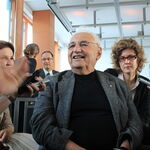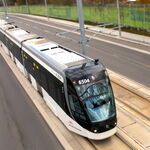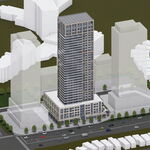I agree with this. Without physical cues like an island forcing them to the right, cars will stop at the light in the lane they're at, staring at the signs trying to figure out why they can't go ahead even though there's an open lane right in front of them. Meanwhile, they'll be blocking the streetcar from proceeding who can't let out passengers because the stop is now on the far side.
Worse still, I looked at the diagram along the entire span and there will be a lot of through traffic still alowed. For example, a car can legally enter at Peter and continue all the way to University. Only now, they have to drive in the streetcar lane because there is only one lane to share amongst them.
This could have been avoided by making alternating one ways which everybody can intuitively understand. Leave it to this city to screw up the entire point of this project by compromising to both sides until neither of them get something that works. Call me cynical but this looks destined — if not designed — for confusion and further gridlock for both streetcars and cars.




